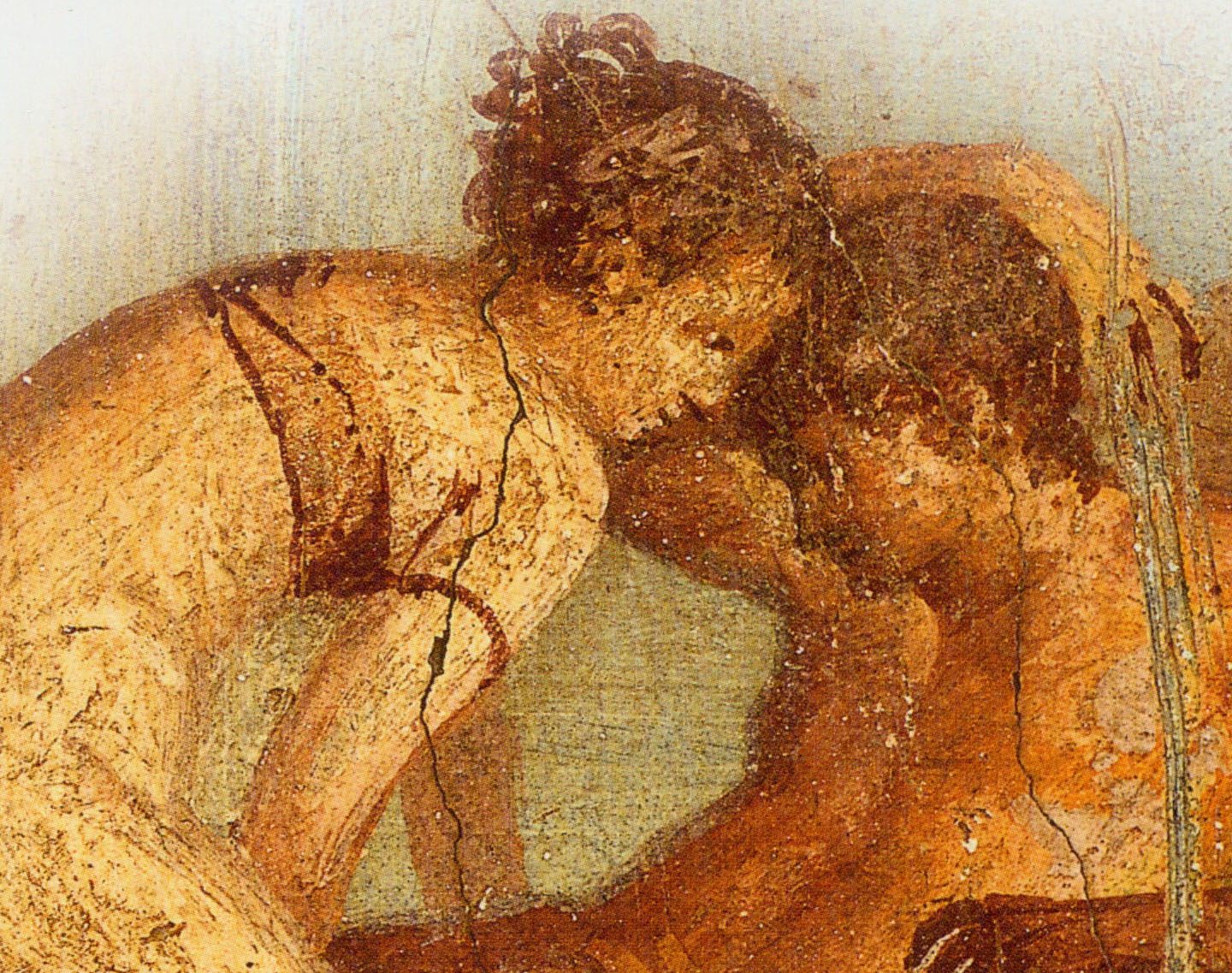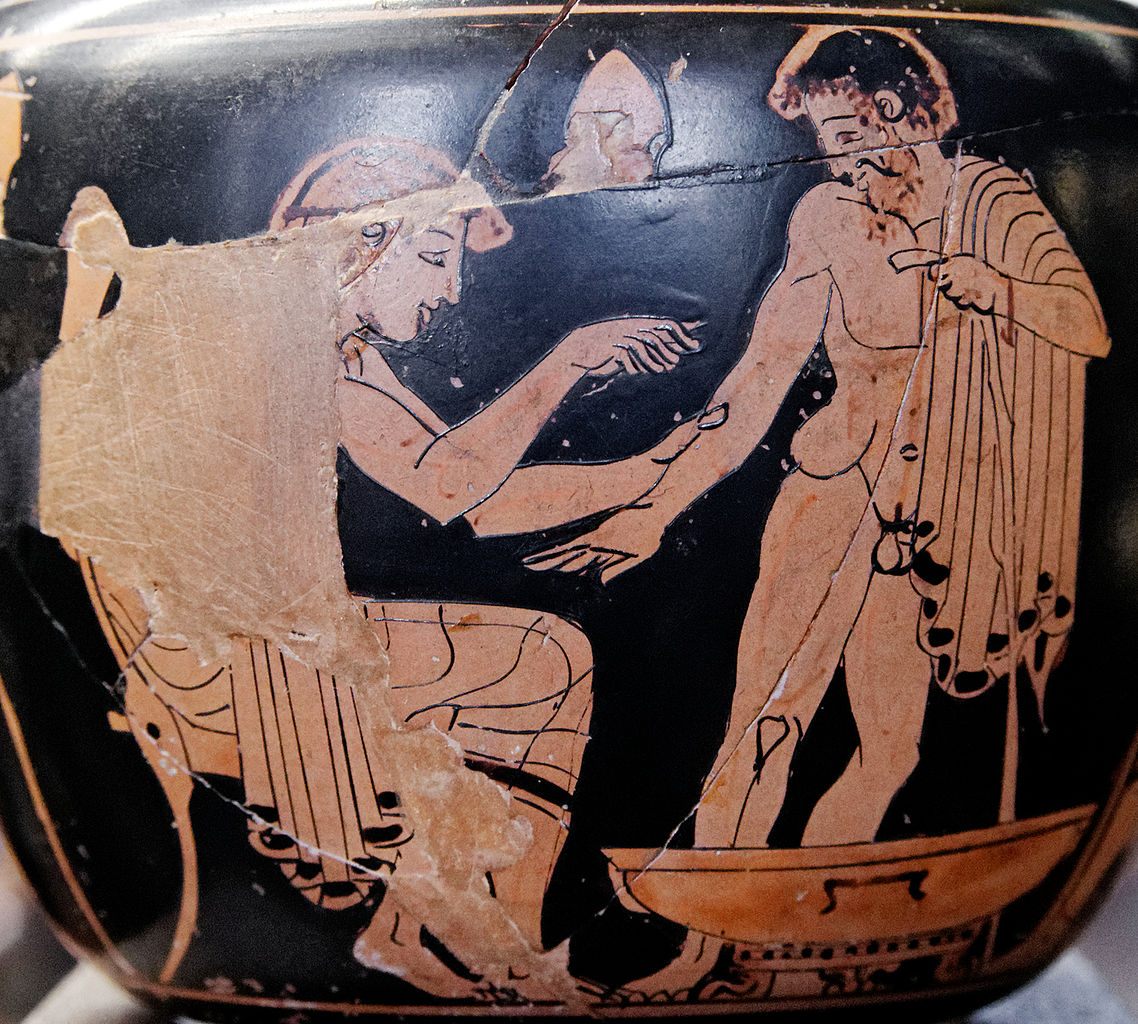The Ancients Used Hyena’s Foot for Childbirth—And Identified Copper As a Contraceptive
Ancient Greek and Roman ideas about sex, disease, and contraception were often bizarre, but occasionally prescient.

Watch any modern depiction of the Greeks and Romans on TV and you’ll see an endless montage of exciting sex, often involving scores of topless women and writhing orgies. Fun as these exaggerated portraits are, they tend to leave out the less glamorous aspects of consensual sex in the ancient world.
In an era lacking in scientific knowledge, the ancients were on their own when it came to addressing sexual predicaments and unwanted pregnancies. Many methods were effective, some were not. Others were downright dangerous. What was it like to have sex in antiquity?
For some people it meant dealing with sexually transmitted infections and the mockery they could evoke. Ancient authors didn’t write about them often, but when they did, the context was often malicious humor. Take anogenital warts, which Roman poets called “figs.” In one poem, Martial describes a man named Labienus who became the unlucky possessor of an entire “orchard of fig trees.” Their association with promiscuity led Martial to label S.T.I.s under the umbrella category of indecens morbus, or “unseemly disease.”

Although ancient Romans knew little about infectious diseases, Martial’s poem about Labienus suggests they saw a connection between sex and illness. According to the Roman poet Catullus, even body odor could be transmitted sexually. He informs a man named Rufus that women refuse to have sex with him for fear of catching his vile scent, which Catullus calls a “plague” (pestis in Latin). This wasn’t entirely a joke, since the Romans believed smells could be vectors for infectious disease. In his history of Rome, the writer Livy describes a plague spreading to the living through the smell of the decomposing bodies of its victims.
Gonorrhea, or at least a disease with that name, shows up in antiquity, too. The Greek physician Galen was the first to coin the word using the Greek terms for “seed” and “run.” Writing in the second century C.E., he describes the condition as an “unwanted” and “involuntary” secretion of semen that occurred when the patient didn’t have an erection. A similar description comes from Galen’s contemporary Aretaeus, a Greek physician from Cappadocia. That runoff, he says, is “thin, icy, pale, and sterile.”
Modern physicians doubt this condition was what we now call gonorrhea—still, it seems clear that regardless of how it was contracted, it would hinder future attempts at sex. Nor, says Aretaeus, was the problem limited to men. Women could contract it too—and if they did, they suffered from what he called “an indecent desire for intercourse with men.”

For most people in the ancient world, having children was a major reason to have sex, since children provided status in Greek and Roman society and heirs to personal assets. For some adults, pregnancy was also an opportunity for fun on the side. The Roman author Macrobius claims that Julia, the daughter of the emperor Augustus, used to joke that pregnancy was what allowed her not only to sleep with men other than her husband, but lots of them.
Of course, bearing children could be deadly to women in antiquity, given the state of medicine at that time. Pliny the Elder’s descriptions of care for women giving birth does not inspire confidence in ancient obstetrics. He claims that girls are more difficult to deliver than boys. To speed up a delivery, he suggests placing the right foot of a hyena on the woman, or having her drink a mixture of goose semen and water. As a painkiller, he recommends drinking a concoction of sow’s dung mixed with honey wine.
As desirable as children were, they were also expensive. So while most people wanted children, many would have used contraceptives to avoid having too many. Women engaged in sex work likely would have tried to avoid having children altogether. Many of their methods are lost to us now, as they were likely transmitted orally, but ancient medical treatises devote a lot of space to birth control and abortion, so we know that women had options to choose from.

Some of these methods may have been more effective than others. In his treatise On the Nature of Women, famed Greek physician Hippocrates suggests an oral contraceptive containing “moistened copper ore.” Consuming copper would not have been an effective abortifacient, but his advice does suggest that the Greeks were vaguely aware of the link between copper and contraception that the modern hormone-free IUD relies on.
Additional helpful advice comes from Soranus, a Greek author from southwestern Turkey who lived under the Roman Empire in the second century. Soranus was so interested in women’s health that he wrote a treatise called Gynaecology, which covers matters like who makes the best midwife (quiet women with extensive medical knowledge) and whether lifelong virginity is healthy (it isn’t). His recipes for oral contraceptives include ingredients like rue and pomegranate peel, which are verified abortifacients.
Modern historian John Riddle suggests that the ancients learned about plants that could be used to prevent pregnancy by observing how animals, in addition to human beings, reacted to them. Theophrastus, a Greek writer who studied under Plato, writes that a plant called the death carrot (Thapsia garganica), which was used a few centuries later as an effective abortifacient, could kill cattle that ingested it. Observations like this may have led people to experiment with the plant as a contraceptive and encouraged them to pass on this knowledge. As a result, rue, copper, and many of the other substances that Greeks and Romans used to prevent pregnancy emerge in medieval antifertility advice, too.

Unfortunately for the ancients, many of their ideas about contraception and abortion were ineffective and even perilous. In the second century, the Roman author Pliny stated in his Natural History that stepping over a viper could induce a miscarriage and should be avoided by women who wanted to keep their babies. Soranus, in addition to dispensing advice that would have worked, suggests a vaginal suppository of lead and old olive oil, presumably to clog the vaginal canal and keep semen out. It’s possible that this method would have prevented pregnancy, but the toxicity of the lead would have been extremely dangerous to any woman who used it.
Soranus is also the author of some of the funniest contraception advice to survive from antiquity. Indeed, he seems to have added his own twist to the pull-out method. Oswei Temkin’s translation of Soranus’ advice reads, “During the sexual act, at the critical moment of coitus when the man is about to discharge the seed, the woman must hold her breath and draw herself away a little, so that the seed may not be hurled too deep into the cavity of the uterus.” Soranus adds, “And, getting up immediately and squatting down, she should induce sneezing… She might even drink something cold.”
As strange and funny as many of these recommendations seem, they reveal how little the ancients had to go on when it came to finding ways to enjoy sex and how surprisingly successful they were. Overall, though, sex in the present seems much safer and more enjoyable than it was 2,000 years ago.
















Follow us on Twitter to get the latest on the world's hidden wonders.
Like us on Facebook to get the latest on the world's hidden wonders.
Follow us on Twitter Like us on Facebook